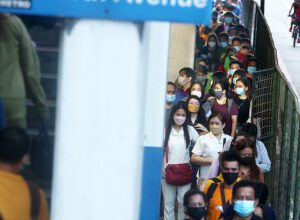People’s movements and the 2022 presidential election

Elections are the means to s/elect leaders and governments. Through elections, we can hold leaders and governments accountable, although with varying success. Through elections, we can ensure that citizens’ interests and needs are represented in the democratic process, although not all the time. Most importantly, through elections, we get to exercise our right to vote, although we don’t always choose to cast our vote.
In elections, political parties usually play an important role. A political party fields its candidates during elections and ensures its candidates win. Winning an election means seizing power in government. The more seats a party wins, the greater its control over the decision-making processes.
In the Philippines, political parties have never reached a 100% mark for relevance and utility during elections. Where votes are based on candidates and personalities rather than party principles or ideals and social issues, political parties fail in aggregating all interests and socializing voters to choose on the basis of party platform, ideology, or performance.
What’s wrong with Philippine political parties?
Since time immemorial, party switching has been common in the Philippines. Politicians gravitating towards the party in power has been a constant feature of every new administration. Is the presidential system of government at fault? Or is the lack of a sense of party loyalty among politicians the culprit?
What may be worse than disloyal party members are the self-serving if not self-aggrandizing party members. Writing about weak intra-party solidarity that marked the Philippine party system, Carl Lande (1967) highlighted “rebel candidates” among “party members who, having failed in their efforts to have themselves named their parties’ ‘official candidates,’ run for office nonetheless despite the fact that by doing so, they will assure the defeat of their party’s official candidates at what otherwise might have been certain victories.” Weak intra-party solidarity is also evidenced by “the existence of many arrangements for mutual help between candidates of opposite parties running for different offices.” This isn’t deja vu, right?
If not for the political resources that a political party may provide, why would one covet a political party’s support during elections when political party membership is not even one of the qualifications for an elective office? Even the party-list system is not spared from unscrupulous politicians who run under the system without a track record of advocacy for that sector one supposedly belongs to and represents.
Without conventional politics — that is, political parties effectively steering the public space — and with the stakes much higher in the upcoming 2022 presidential election, the alternative is for citizens to resort to creating “people’s movements” at various levels of engagement where they can create popular spaces and mobilize support for their candidates. Through these people’s movements, citizens hope to expand the political space available to them and bring in the concerns of everyday life. If they succeed, they can vote into office the candidates that they support; and if they get luckier, they can initiate changes in the structures of power and domination that operate in the society.
But would people’s movements win the 2022 election?
Like social movements, people’s movements present themselves as symbols of resistance to the dominant powers and to those seeking a path back to power. These movements offer a ray of hope to hold the government (past and present) accountable for its excesses and consequently, initiate process of social change.
Unlike “old” social movements, which were more class-based and sought power, these people’s movements demand democracy. By organizing themselves as people’s movements, they provide an alternative to the conventional form of politics which is more of a power game.
But can these people’s movements win the 2022 election? Hopefully, yes! But only if these people’s movements can keep their popular spaces growing in terms of both numbers and significance and attain the scale and strength capable to persuade voters on the election day in May 2022. But how will they do this? Let’s leave it to the seasoned political strategists to worry about this question.
Instead, we ask, “What can the people’s movements, which have mushroomed in recent months, learn and adopt from social movements?”
Nardini, et al. (2020) in their article, “Together We Rise: How Social Movements Succeed,” offered a framework for explaining how social movements succeed in creating social change. Building on the findings of extant research on social movements, Crutchfield’s (2018) research at the Global Social Enterprise Initiative at Georgetown University, and insights from consumer psychology, Nardini et al.’s framework highlights broad actions leading to the success of a social movement. The framework provides some useful tips for people’s movement organizing for the 2022 presidential election.
1. Build grassroots momentum. Grassroots organizing or local groups targeting and organizing their own communities is the key. Success is likely if individuals and groups at the grassroots level are enjoined and connected both to the movement’s cause and through relationships between the movement’s members.
2. Connect people to the movement. Individuals and groups must feel that they belong and that they matter to the movement. The more they feel connected, the stronger their group engagement is, and hence, makes them feel powerful. When they feel powerful, they are more likely to develop stronger, more certain convictions; and when they do, they become more committed to the cause.
3. Connect movement members to each other. This is important for developing a collective sense of purpose and identity, thereby reinforcing shared views and positions. Regardless of where it takes place, either in shared, physical spaces or in online platforms, what matters more is that these connections must happen.
4. Build a network to connect the movement. To reach optimal efficiency, strong ties (i.e., with close friends) and weak ties (i.e., with distant acquaintances) between members must be nurtured for information and resource sharing. Through the networks and the brokers of the networks, bystanders may be transformed into upstanders.
5. Be leaderful. Movements need not be leader-led or leaderless. Instead, develop a hybrid form of leadership in which multiple leaders and organizations collaborate through coalition building, power-sharing, decentralized grassroots organizing, and collective decision making.
6. Win hearts and minds. Anger, frustration, feeling of exclusion are not the sole motivators for individuals and groups to join a movement. Combining negative emotional cues with positive messages such as strength, inspiration, helping messages can mobilize broader social support and spur action. Moreover, use the power of storytelling — the sharing of a movement’s narrative. More importantly, as movements navigate between physical spaces and online platforms, work toward winning hearts and mind through online connections and interactions in lieu of offline interactions.
How are the people’s movements faring in engaging in these actions? How far are we from winning the 2022 election?
Diana J. Mendoza, PhD is an assistant professor of Political Science at the Ateneo de Manila University.



